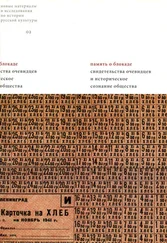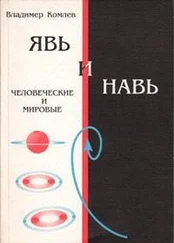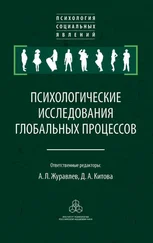Albert Schweitzer, The Psychiatric Study of Jesus (trans. Charles R. Joy; Boston: Beacon, 1948). Главный аргумент Швейцера заключается в том, что Иисус, если его рассматривать в его собственном историческом контексте, был психически здоров.
Black, An Aramaic Approach to the Gospels and Acts (3 rded.; Oxford: Oxford University Press, 1967; repr., Peabody, Mass.: Hendrickson, 1998). Первое издание появилось в 1946 году, второе – в 1954-м.
D. F. Moore, Jesus, an Emerging Jewish Mosaic: Jewish Perspectives, Post-Holocaust (JCTCRS 2; New York: T&T Clark, 2008). Публикуется с разрешения правообладателя: Continuum International Publishing Group, Inc.
J. D. G. Dunn, Jesus Remembered (CM 1; Grand Rapids: Eerdmans, 2003), с. 885.
G. Vermes, Jesus the Jew: A Historian’s Reading of the Gospels (1973; repr., Philadelphia: Fortress, 1981).
Dunn, Jesus Remembered, с. 88. Данн называет Вермеша «Иоанном Крестителем Третьего поиска». В своей рецензии на книгу Вермеша: G. Vermes, Changing Faces of Jesus (New York: Viking, 2001) Эд Пэриш Сандерс, соглашаясь с Данном, идет еще дальше и говорит: «В лице Гезы Вермеша Иисус обрел своего лучшего толкователя из иудеев» (E. P. Sanders, « In Quest of the Historical Jesus », The New York Review of Books 48, no. 18 [Nov. 15, 2001]: 8, http://www.nybooks.com/articles/14789, с. 8.
G. Vermes, Jesus in His Jewish Context (Minneapolis: Fortress, 2003), с. 1. Заметим, что данный текст призван заменить и обогатить предыдущую работу Вермеша: G. Vermes, Jesus and the World of Judaism (Philadelphia: Fortress, 1983). Чтобы лучше понять, что евреи думали об Иисусе до того, как появились нынешние благосклонные взгляды, см.: S. Sandmel, We Jews and You Christians: An Inquiry into Attitudes (New York: Lippincott, 1967), с. 66–67. Чтобы оценить «первоначальные преимущества иудейских спорщиков» с учетом исторического подхода к Иисусу, см.: E. Borowitz, Contemporary Christologies: A Jewish Response (New York: Paulist Press, 1981), с. 4.
D. Flusser, «Jesus and Judaism: Jewish Perspectives», в кн.: Eusebius, Christianity, and Judaism (ed. H. Attridge and G. Hata; StPB 42; Detroit: Wayne State University Press, 1992), с. 80–109, цит. с. 103.
Vermes, Jesus in His Jewish Context , с. 60.
Карл Бротен, вступление к книге: P. Lapide, The Resurrection of Jesus (trans. W. C. Linss; Minneapolis: Augsburg, 1983), с. 7.
R. E. Brown, Jesus, God and Man: Modern Biblical Reflections (New York: Macmillan, 1967), с. ix – x.
L. W. Hurtado, «A Taxonomy of Recent Historical-Jesus Work», в кн.: Whose Historical Jesus? (ed. W. E. Arnal and M. R. Desjardins; SCJ 7; Waterloo, Ont.: Wilfrid Laurier University Press, 1997), с. 272–295, цит. с. 272–273.
S. Ben-Chorin, «The Image of Jesus in Modern Judaism», JES 11 (1974): 401–430, цит. с. 402.
P. Lapide and H. Kung, Brother or Lord? A Jew and a Christian Talk Together about Jesus (trans. E. Quinn; London: Fount, 1977), с. 21.
Там же, с. 44. О такой «беспрецедентной» возможности «учиться вместе» см. также: J. Neusner, Judaism in the Beginning of Christianity (Philadelphia: Fortress, 1984), с. 10–11.
См.: Hurtado, «Taxonomy», с. 279.
S. Sandmel, We Jews and Jesus (New York: Oxford University Press, 1965).
S. Sandmel, A Jewish Understanding of the New Testament (2 nded.; London: SPCK, 1977).
S. Ben-Chorin, Bruder Jesus: Der Nazarener in jüdischer Sicht (Munich: List, 1967).
S. Ben-Chorin, Brother Jesus: The Nazarene through Jewish Eyes (trans. and ed. J. S. Klein and M. Reinhart; Athens: University of Georgia Press, 2001).
D. Flusser, Jesus in Selbstzeugnissen und Bilddokumenten (Hamburg: Rowohlt, 1968); idem, R. S. Notley, Jesus (3 rded.; Jerusalem: Magnes, 2001).
D. Flusser, Judaism and the Origins of Christianity (Jerusalem: Magnes, 1988).
G. Vermes, Jesus the Jew: A Historian’s Reading of the Gospels (London: Collins, 1973); idem, Jesus and the World of Judaism (Philadelphia: Fortress, 1983); idem, The Religion of Jesus the Jew (Minneapolis: Fortress, 1993).
G. Vermes, The Changing Faces of Jesus (New York: Viking, 2001); idem, The Authentic Gospel of Jesus (London: Allen Lane, 2003).
J. Neusner, A Rabbi Talks with Jesus: An Intermillennial, Interfaith Exchange (New York: Doubleday, 1993); idem, A Rabbi Talks with Jesus (2 nded.; Montreal: McGill-Queen’s University Press, 2000).
Сэндмел ведет долгую борьбу со своим все более подозрительным отношением к критике форм и разочарованием в ней из-за ее склонности к чрезмерной ясности и субъективизму. См.: Sandmel, The First Christian Century in Judaism and Christianity: Certainties and Uncertainties (New York: Oxford University Press, 1969), с. 143–158.
Sandmel, We Jews and Jesus, с. 121–122.
Там же, с. 112.
Flusser, Jesus, с. 33. Кроме того, Флуссер отмечает, что Лука не упоминает о профессии плотника, говоря об Иисусе или Иосифе. Еврейское использование слова naggar никак не связано с Евангелием от Луки. Достойно внимания то, что у Матфея Иисус представлен как сын плотника (Мф 13:55), и в этом может таиться неявный намек на то, что Иисус в первый сокровенный период своей жизни также занимался этим ремеслом. Хотя нельзя слишком многое строить на этом основании, метафорический подтекст слова «плотник» направляет ход наших мыслей. См. также: Vermes, Jesus the Jew, с. 21–22.
Читать дальше











